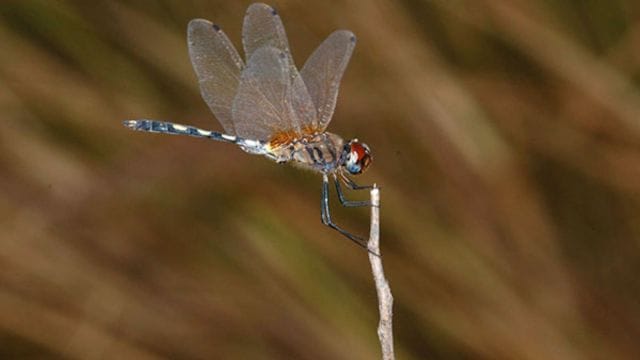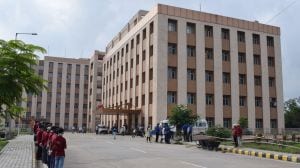Dragonfly survey in Delhi: Increase in total number, dip in species
The three-day dragonfly and damselfly survey was conducted in Yamuna, Aravalli, Neela Hauz, Tilpath Valley, Kamla Nehru Ridge, Tughlaqabad, and Kalindi.
 Dragonflies and damselflies thrive in wetland environments, and the prolonged rainfall has contributed to the formation of ephemeral wetlands and enhanced the availability of aquatic habitats. (File photo)
Dragonflies and damselflies thrive in wetland environments, and the prolonged rainfall has contributed to the formation of ephemeral wetlands and enhanced the availability of aquatic habitats. (File photo)A three-day dragonfly and damselfly survey conducted across seven DDA Biodiversity Parks from September 18 to 20 revealed a marginal decrease in the number of species and a significant jump in the number of flies compared to previous years’ counts. The survey was conducted in Yamuna, Aravalli, Neela Hauz, Tilpath Valley, Kamla Nehru Ridge, Tughlaqabad, and Kalindi.
Kamla Nehru Ridge recorded 3,150 individual flies, ten times the number recorded (391) in 2022. According to a statement by the DDA Biodiversity Parks on Saturday, this rise is closely correlated with the extended monsoon season experienced in the region this year, which has led to more favourable conditions for breeding and habitat availability. Wandering Glider and Ditch Jewel were the most sighted dragonflies across all the Biodiversity Parks. This is indicative of their “wide range of tolerance” and suitable habitats in the urban landscapes of Delhi.
 Wandering Glider (right) and Ditch Jewel (left). (Photo: Wikimedia commons)
Wandering Glider (right) and Ditch Jewel (left). (Photo: Wikimedia commons)
Yamuna Biodiversity Park recorded 21 species, the same as the previous year. Aravalli Biodiversity Park and Tughlaqabad Biodiversity Park saw a marginal decline as it was 10 and 12 respectively, compared to previous years’ counts, 11 and 14, respectively. There was a significant decline in species count from 13 to only five in Neela Hauz. Kalindi Biodiversity Park saw an increased number of species, with 14 recorded this year, compared to only eight last year. The species count was the same in Kamla Nehru Ridge, as it was 25 in both years. Tilpath Valley saw a slight increase in species count as seven species were recorded from the previous number of five.
 Migrant hawker dragonfly species (Aeshna mixta) male on Weigela Florida Brigela Moulin Rouge. (Photo: Wikimedia commons)
Migrant hawker dragonfly species (Aeshna mixta) male on Weigela Florida Brigela Moulin Rouge. (Photo: Wikimedia commons)
Dragonflies and damselflies thrive in wetland environments, and the prolonged rainfall has contributed to the formation of ephemeral wetlands and enhanced the availability of aquatic habitats. Dr Faiyaz Khudsar, scientist-in-charge at Yamuna Biodiversity Park, pointed out that prolonged rainfall has contributed to the formation of ephemeral wetlands and enhanced the availability of aquatic habitats.
The insects are essential indicators of environmental health due to their reliance on clean, well-oxygenated water. Their sensitivity to water pollution makes them important bioindicators, reflecting the overall quality of aquatic ecosystems. Dr Faiyaz said, “The increased count is a great sign…dragonflies act as a natural pest control.”
The statement, which explained the benefits of the finding, said, “The conditions have not only supported higher reproduction rates but also provided ample resources for nymphs and adults, resulting in higher population size and maintaining their essential roles as predators of mosquito larvae… Amid rising dengue cases in Delhi, the density of dragonflies not only gives some relief but also highlights the importance of conservation of these tiny creatures for human sustenance and survival.”












